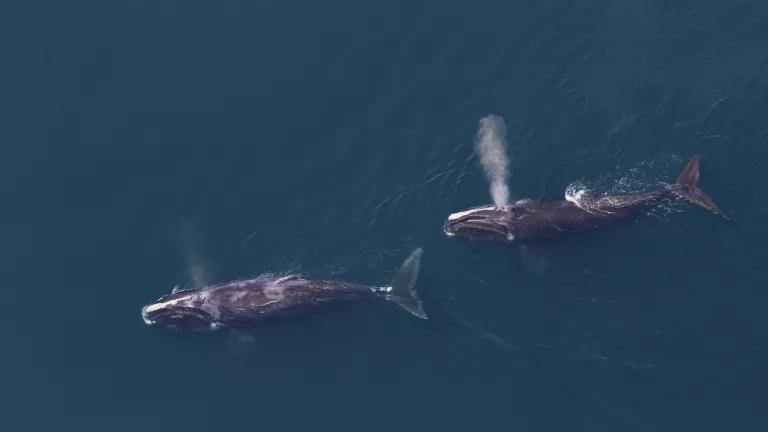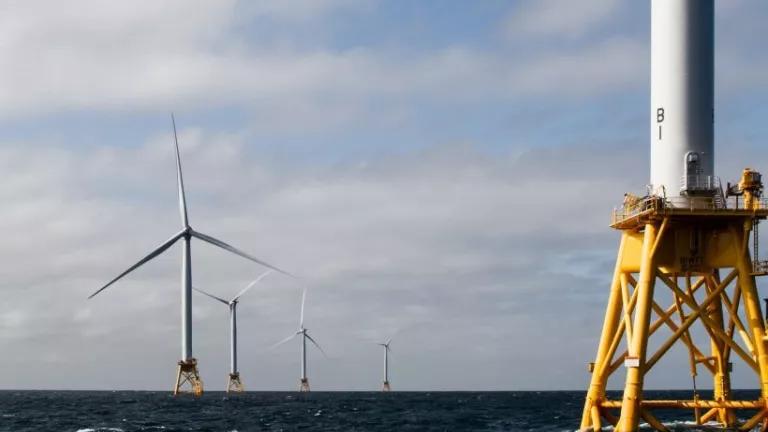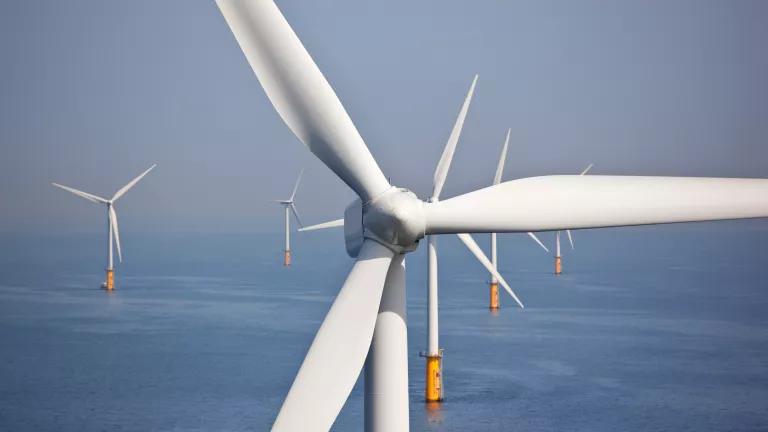Offshore Wind in California: Advancements on the North Coast

California, that state of iconic ocean wildlife and technological innovation, has a chance to chart yet another groundbreaking course. With support from local communities, developers, environmental groups, and former Governor Jerry Brown, the Bureau of Ocean Energy Management is taking steps toward a lease sale for offshore wind development. Reflective of that momentum, this Friday, May 3, California State Senator Mike McGuire, chair of the Joint Committee on Fisheries and Aquaculture, will host a hearing titled, California’s Fisheries and Wildlife: Can they co-exist with Offshore Wind Energy Development? The hearing will take place in Eureka, the area of the Golden State many consider to be best positioned for the first floating offshore wind development in California.
Federal and state agencies have the opportunity to blend California’s leadership on climate action and marine protections to create yet another shining example of smart ocean policy and energy innovation. The result—floating offshore wind energy—could be an enormous contributor to reaching California’s zero carbon energy targets, if we get it right.
To start off the process of site selection, BOEM recently asked for public feedback on three offshore wind “Call Areas”—Diablo Canyon, Morro Bay, and Humboldt Bay—that the agency is considering leasing to developers. NRDC, along with our partners, Environmental Defense Center, Surfrider Foundation, National Audubon Society, Sierra Club, California Coastal Protection Network and Defenders of Wildlife, submitted comments detailing some considerations for protecting the marine mammals, sea turtles, and other marine organisms that live and migrate in these areas. We want to see wind advance quickly, but BOEM must take care to select the best sites for the industry to flourish alongside marine life.
The California Current is one of the world’s most productive ecosystems. Along the coast, major upwelling centers nourish the coastal waters, fueling them with nutrients from the deep. A vast range of habitats, including rocky reefs and pinnacles, colorful hydrocorals, diverse sponges, steep canyons, and the margins of offshore islands support a remarkable variety of ocean life, including hundreds of species of fish and dozens of species of birds and marine mammals. California’s Farallon Islands support a growing population of northern fur seals, threatened Steller sea lions, and the largest seabird colony in the continental United States. Every year, more than 20,000 gray whales travel a migratory route between the Arctic and Baja.
Given this richness, it’s clear that any new industrial ocean development needs to be thoughtfully designed. Paramount to thoughtful design is siting that avoids areas that have the high potential for wildlife conflicts with the new technology. For example, floating turbines are anchored to the seafloor—a poorly-placed anchor could destroy several-hundred-year-old coral that harbor juvenile fish important to commercial fishermen. Yet, with the use of benthic survey equipment, it is entirely possible to identify areas of low natural resource conflict and to select those for development.
We know that offshore wind can be developed in a responsible manner that protects valuable marine life. As momentum builds in California, state and federal agencies can and should apply lessons learned from siting large-scale solar projects such as the Desert Renewable Energy Conservation Plan and the San Joaquin Valley Least Conflict Solar Project. Given that federal and state agencies have experience incorporating environmental sensitivities into their renewable energy planning efforts, the agencies planning for this new energy source can carefully evaluate tradeoffs as we move our clean energy solutions into the marine environment.
To help California embark on this new clean energy frontier, NRDC will present at the May 3 hearing to share how offshore wind development in the Humboldt Call Area can be a win for clean energy and the marine environment. California has time to get this right—for our growing clean energy needs, our coastal communities, and beloved marine mammals and wildlife.




